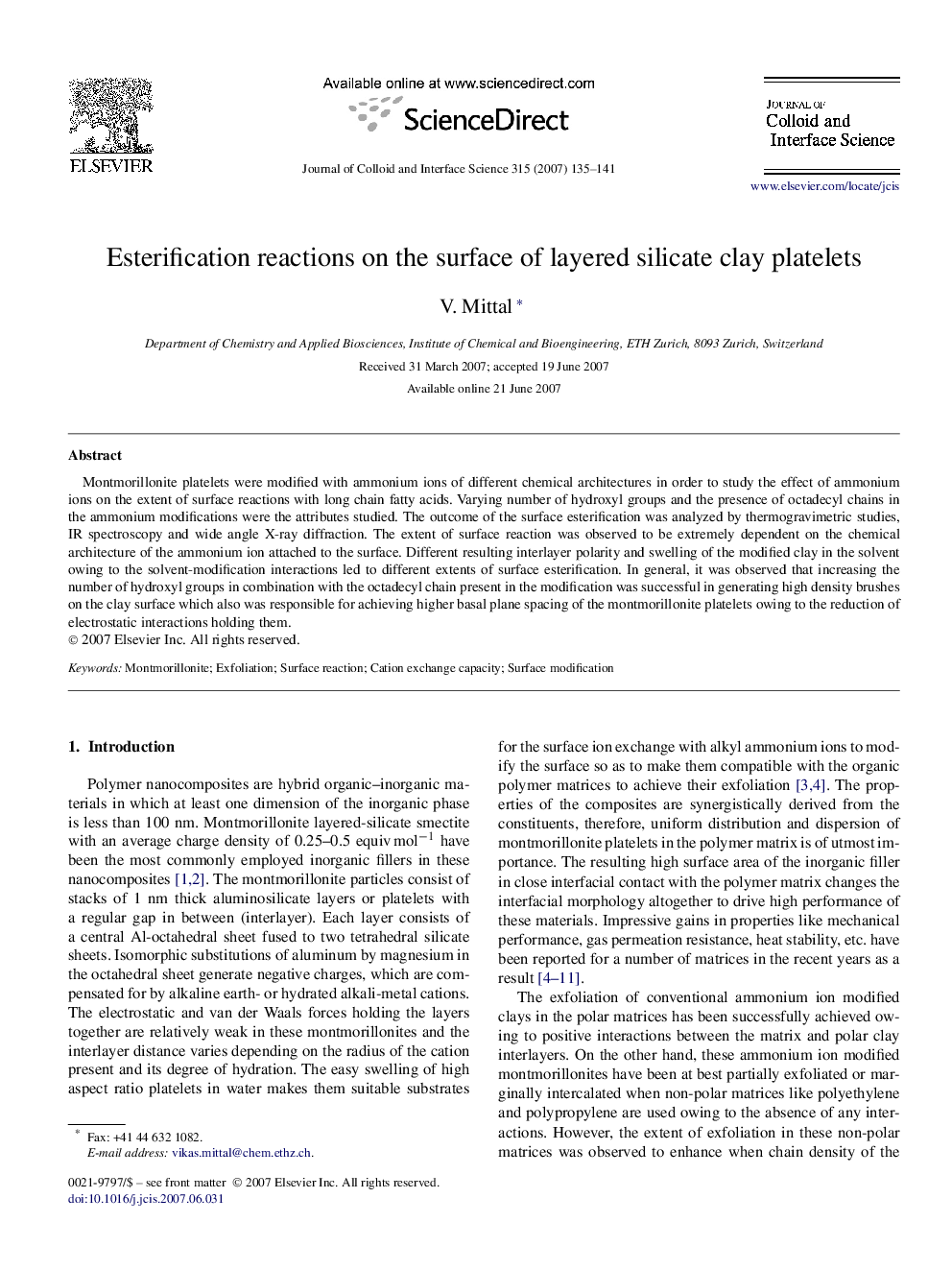| Article ID | Journal | Published Year | Pages | File Type |
|---|---|---|---|---|
| 612270 | Journal of Colloid and Interface Science | 2007 | 7 Pages |
Montmorillonite platelets were modified with ammonium ions of different chemical architectures in order to study the effect of ammonium ions on the extent of surface reactions with long chain fatty acids. Varying number of hydroxyl groups and the presence of octadecyl chains in the ammonium modifications were the attributes studied. The outcome of the surface esterification was analyzed by thermogravimetric studies, IR spectroscopy and wide angle X-ray diffraction. The extent of surface reaction was observed to be extremely dependent on the chemical architecture of the ammonium ion attached to the surface. Different resulting interlayer polarity and swelling of the modified clay in the solvent owing to the solvent-modification interactions led to different extents of surface esterification. In general, it was observed that increasing the number of hydroxyl groups in combination with the octadecyl chain present in the modification was successful in generating high density brushes on the clay surface which also was responsible for achieving higher basal plane spacing of the montmorillonite platelets owing to the reduction of electrostatic interactions holding them.
Graphical abstractX-ray diffractograms of montmorillonite before and after surface esterification reactions.Figure optionsDownload full-size imageDownload as PowerPoint slide
